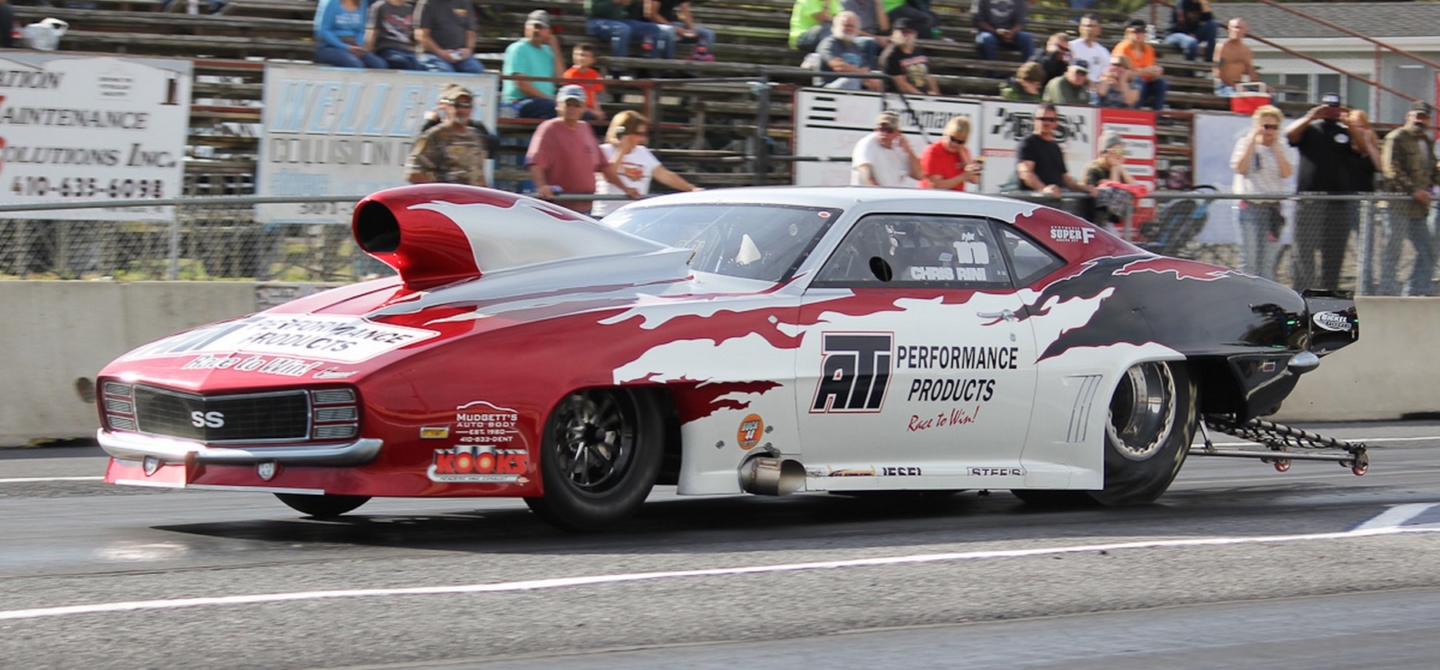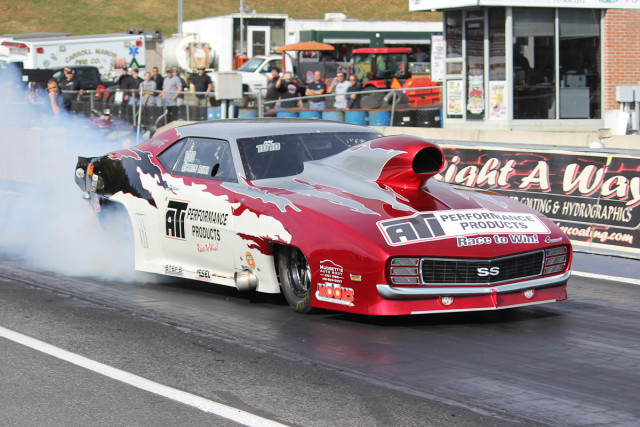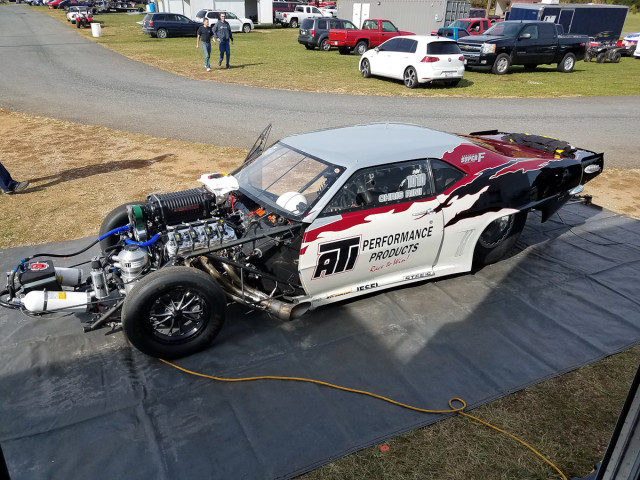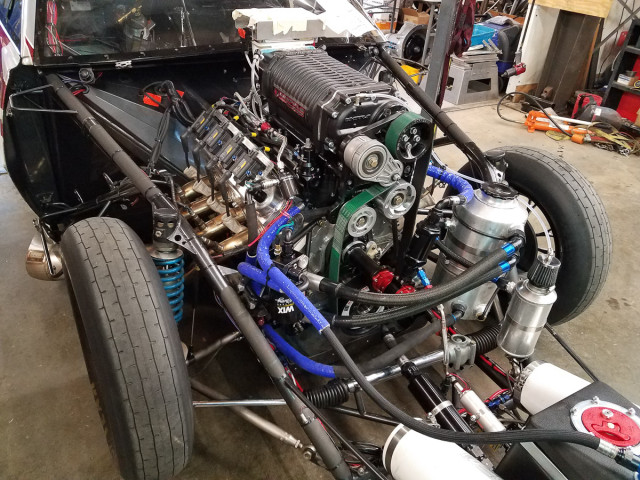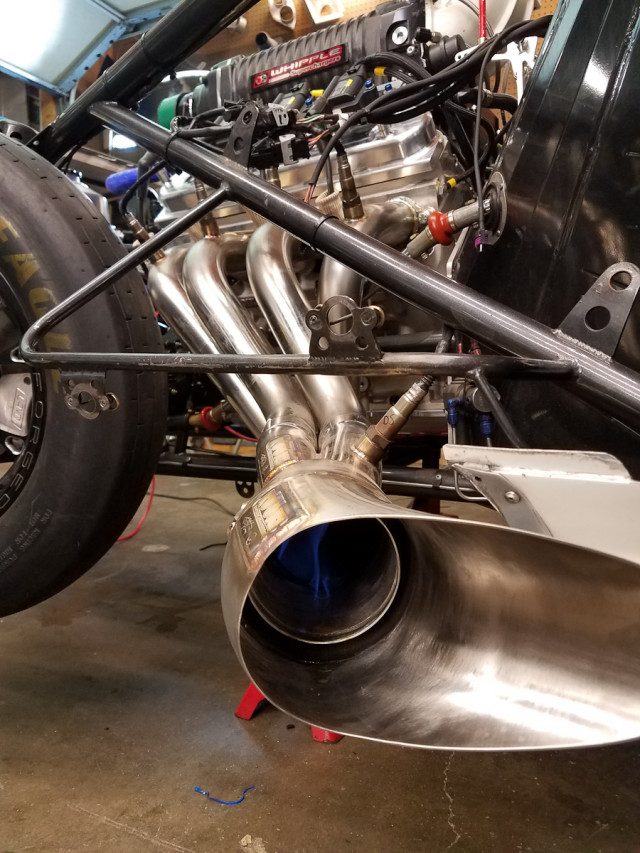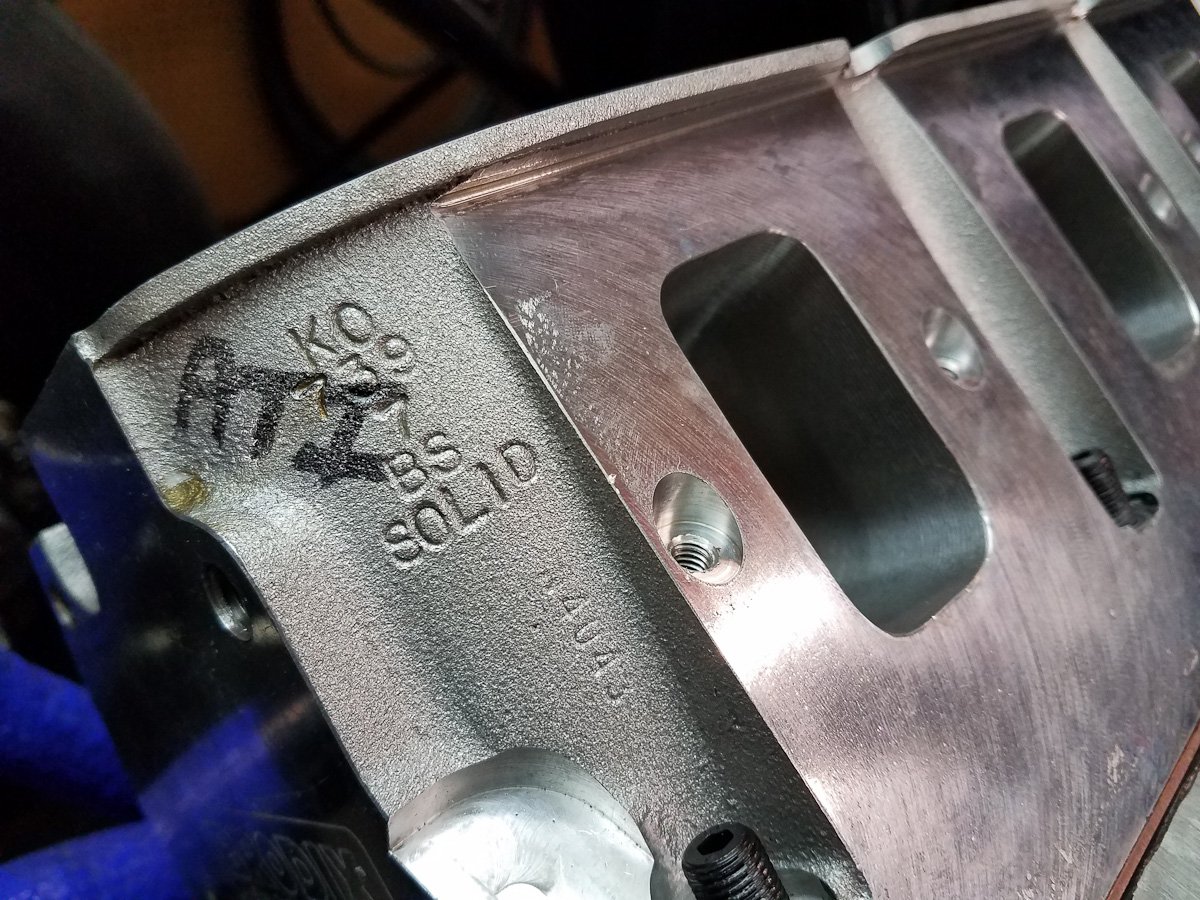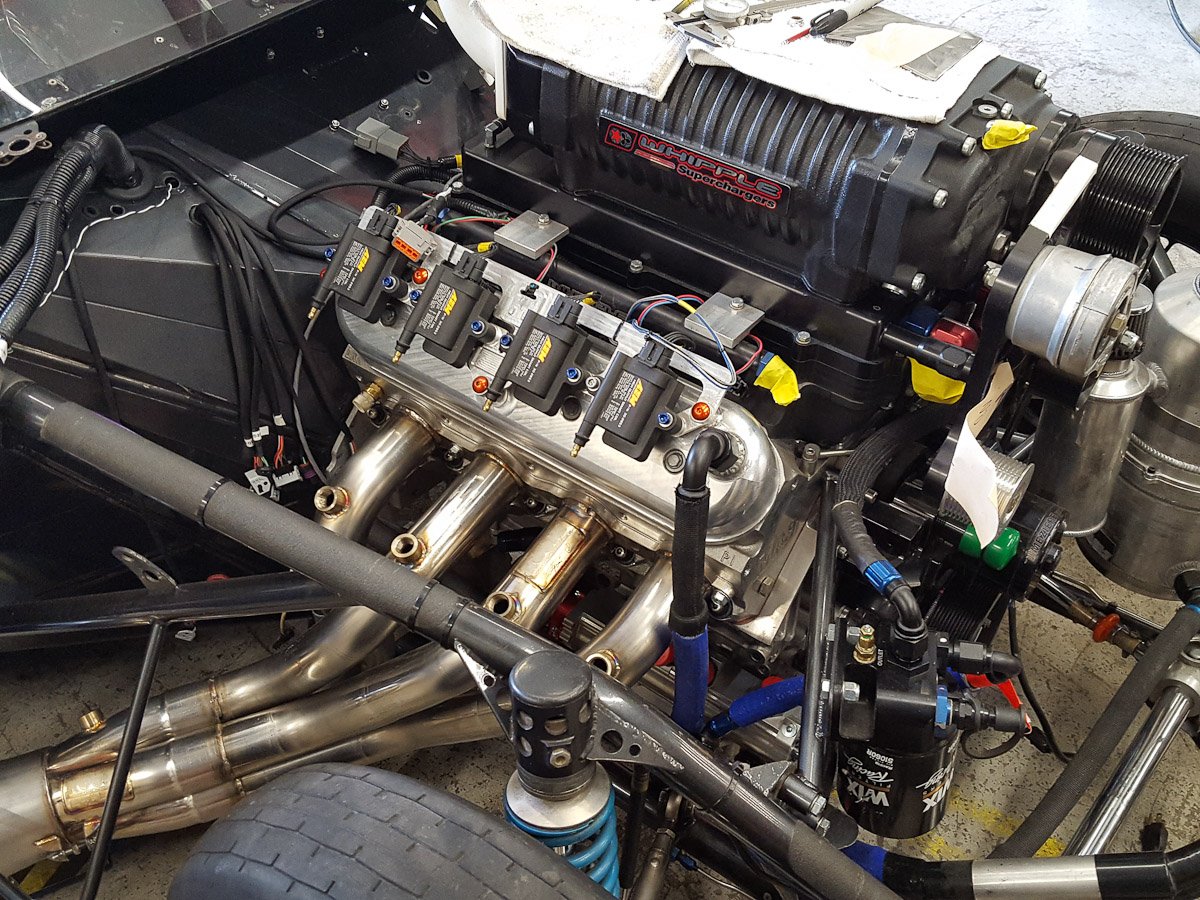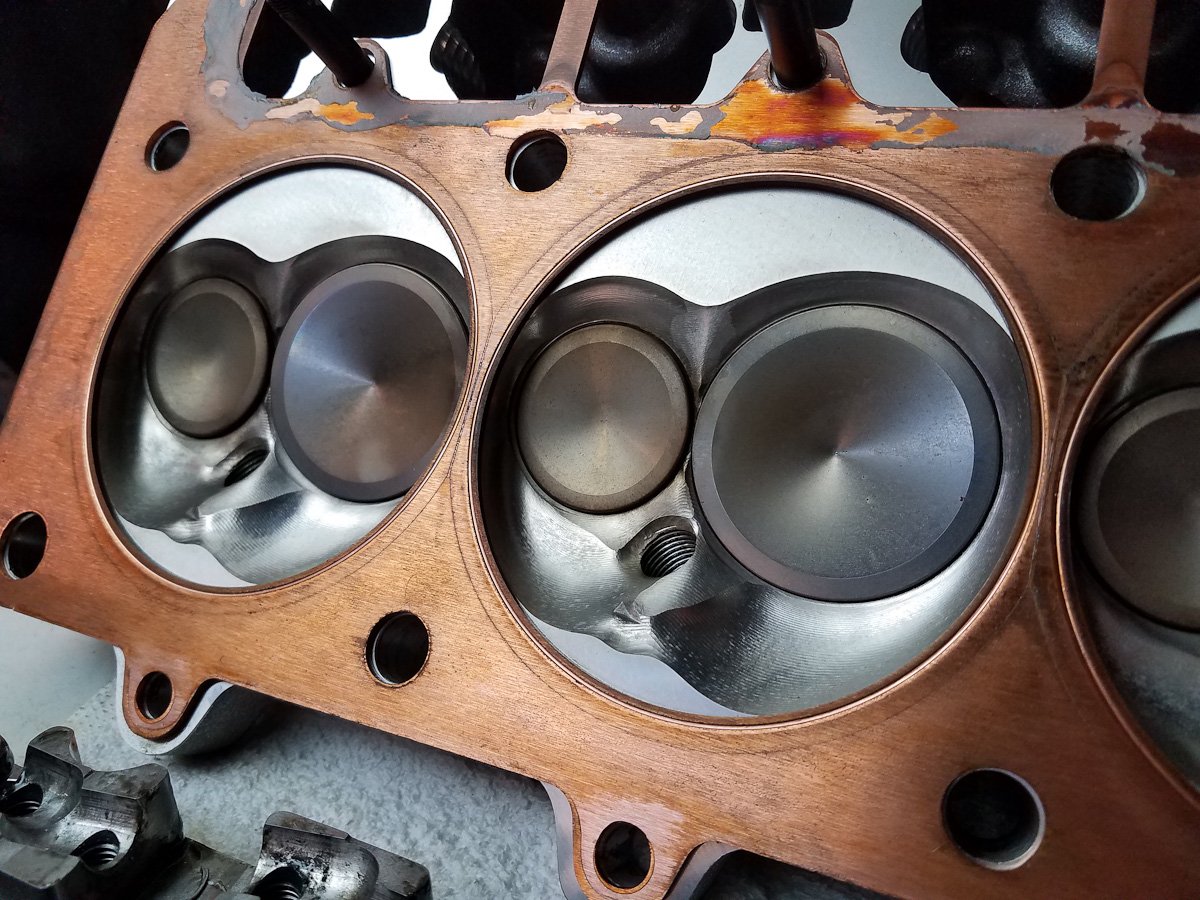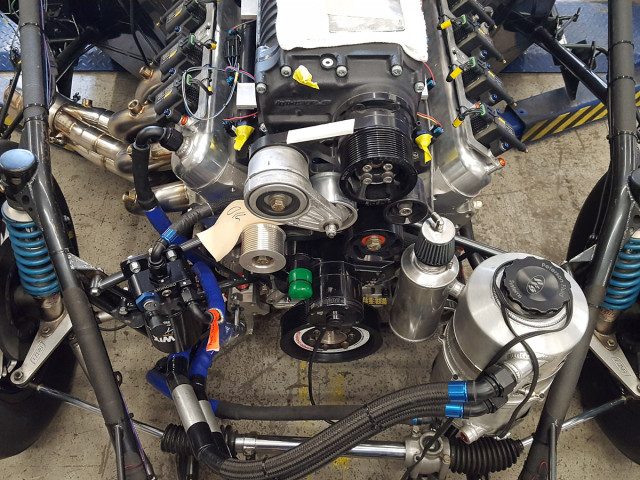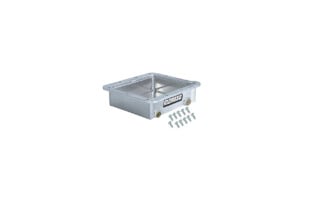Call it necessity, call it progression or what have you, but drag racing has, through the years, gradually shifted away from the use of true production engines and parts in favor of aftermarket engine combinations intended to wring out ever-larger cubic inch displacements and, in turn, horsepower. These days, production engines are the exception to the norm, rather than the norm itself, and it’s that fact — and his familiarity with GM’s LS engine platform — that inspired ATI Performance Products’ J.C. Beattie, Jr. to go a unique direction with his Top Sportsman Camaro project.
J.C., the second-generation leader of the Maryland-based racing drivetrain manufacturer, has been competing for a number of years in Super Stock and Stock Eliminator with factory-built race cars, most notably a supercharged 2012 COPO Camaro that he’s run in both Super Stock and in the heads-up Ultra Street class with a blown LSX combination. ATI has, since that first run of COPO’s in 2012, been the provider of the transmissions, converters, and dampers for the COPO program, so it’s certainly near and dear to J.C.’s heart. To that end, he’s spent plenty of time under the hood and behind the wheel of the factory-built rockets and gained ample experience with the supercharged LSX, so when it came time to sketch the plans for his next endeavor, he didn’t have to look far.
J.C. laid the groundwork for his foray into fast doorslammer racing a number of years ago when ATI-sponsored Pro Modified racer Chris Rini had a state-of-the-art 1969 Camaro constructed at Jerry Bickel Race Cars that caught his sponsors’ eye.
“When Chris bought the car, I told him that he wasn’t allowed to trade it in, and that we wanted it when he was done,” J.C. says. And, as it was, after several seasons of competition, Chris finally opted to ‘retire’ the car at the close of the 2015 season and placed an order for a new machine, allowing Beattie, Jr. to take over ownership of the lightweight, proven three-second car. Once in his possession, the Camaro spent the next year being converted into J.C.’s vision, with an all-new powerplant, driveline, and ECU system.
The most unique element of the car is, of course, his choice of powerplant. While J.C. could have easily settled with a tried-and-true big-inch, big-block Chevrolet-style aftermarket powerplant — your usual 565- or 632-inch combinations that are a dime a dozen in bracket racing, for example — he opted to go down a more unique path with a COPO Camaro-style, GM production-based bullet — a combination that some might argue is exactly the direction that the NHRA’s Pro Stock category should have gone years ago.
When Chris [Rini] bought the car, I told him that he wasn’t allowed to trade it in, and that we wanted it when he was done. – J.C. Beattie, Jr.
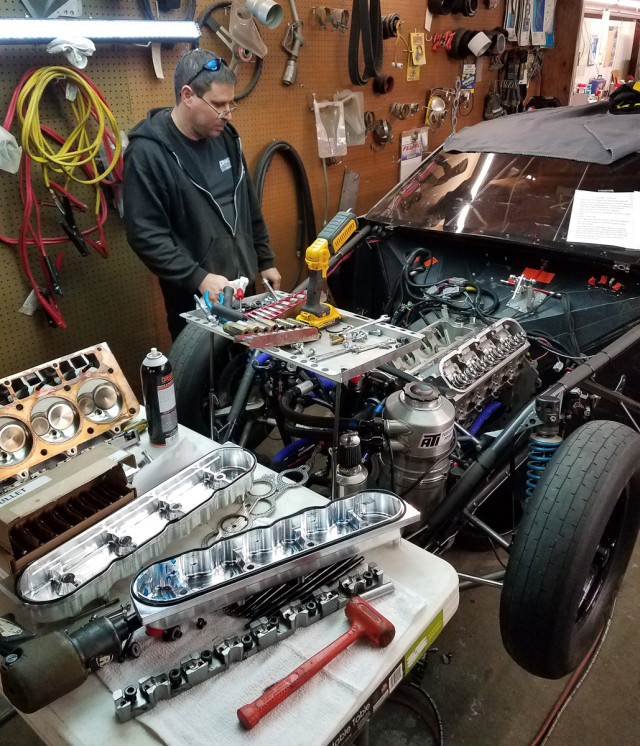
Shawn Miller (pictured) with the newly-installed LSX powerplant that he built at his Precision Racing Technologies shop in Virginia.
Keeping with the traditional COPO engine package, and certainly unique in its own right in Top Sportsman, J.C. topped it with a bone-stock 4.5 liter Whipple twin-screw supercharger — a ‘huffer’ just a little larger than the 4.0-liter variant offered on the 2012 factory racecar and significantly larger than the current 2.9-liter Whipple on the 2016-17 model.
The 4.5-liter blower, as J.C. shared, keeps up with the 388-inch package at 8,500 rpm, whereas the 4.0-liter at the same cubic inch, he found, simply can’t provide enough air above “about 8,000”.
The engine is finished out with a Dailey Engineering billet dry sump and vacuum pump oil system, ATI crank trigger kit, an Aeromotive fuel system, and Kooks stainless custom headers, measuring 2-1/8-inch all the way through.
“We’ve been involved with the COPO Camaro program since day one, or really before day one when it was a concept car, and we initially started working on the Super Stock motors, because the bigger 4.0-liter blower engine came out first, and we realized early on that they make great horsepower even when you’re not running them on dead-kill, and they’re pretty damn consistent and reliable. So, when we first started doing the motor for NMCA and Ultra Street in the COPO, I didn’t want to change bases, so we stuck with the LS platform. We knew what that would do, so then we decided why not take it one step further and go solid block and methanol where we can for the rules and build a combination that will make 1,500-plus horsepower and run it in Top Sportsman?”
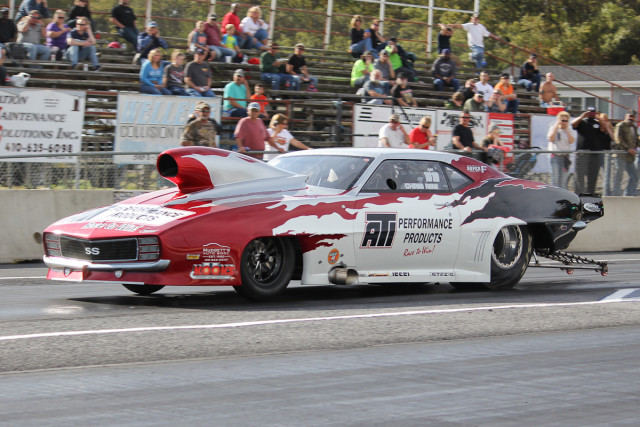
J.C. snuck in a few laps just before the buzzer in late November, going a best of 4.40 in the 1/8-mile at the Mason-Dixon Dragway (the car went 4.60 right off the trailer).
“It’s just a good, natural progression for us, we had a decent handle on parts and pieces that allowed us to make some new things,” J.C. continues. “At the end of the day, everybody has a big-block nitrous car, so why not do something a little different, have some fun with it, and learn a little bit? If I look at anything from damper sales, the LS market sure isn’t fizzling out.”
The theory was that if we ran 4.90’s rather easily in a 3,350 pound car on radials, that the same engine with a bigger blower in a much lighter car on a big tire had to be fast. – Shawn Miller, Precision Racing Technologies
“J.C. approached me at the Yellow Bullet Nationals in 2015 to build an engine similar to the one I built for his COPO Camaro for Ultra 275,” Miller shares. “The theory was that if we ran 4.90’s rather easily in a 3,350 pound car on radials, that the same engine with a bigger blower in a much lighter car on a big tire had to be fast. So, I decided that some engine upgrades were also needed and we opted to put it on alcohol. It’s got an incredible amount of potential.”
The driveline, as if there were any question, is all right out of the ATI shop — a three-speed Turbo 400 (with gear ratios of 1.86, 1.41, and 1:1) with their Super Case and bellhousing is paired up with a 9-inch bolt-together converter.
After acquiring the car from Rini, J.C. first took the Camaro to Bickel to be fitted for the smaller LS engine and a slightly smaller hood scoop, and to have some of the nitrous-specific items removed. From there it was delivered to Nth Moto in Minnesota to have the AEM Infinity system and all of the wiring harnesses, the eight widebands, the delay box, and other electronics installed, before going to Kooks in North Carolina to have the headers made.
Along with the Infinity system, J.C. is using AEM’s CD-7 full color digital dash, and has also wired in Racepak proximity sensors front and rear, linear position sensors on all four corners, and a wheelie bar pressure sensor.
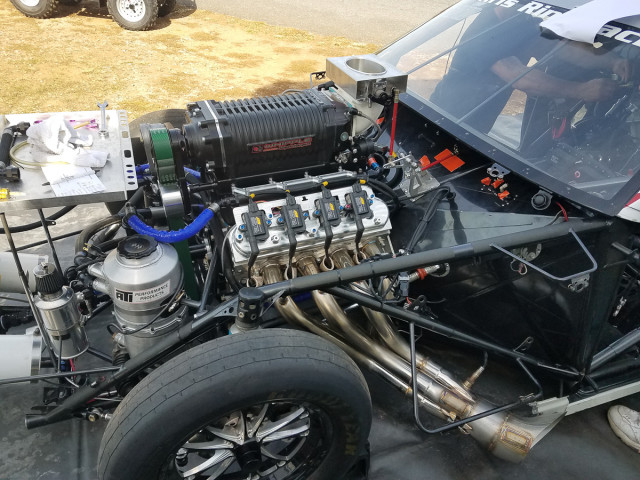
The Whipple supercharger, a 4.5-liter piece that’s a little larger than the 4.0-liter that was standard issue on the 2012 COPO Camaro, is a 100 percent OEM part.
The engine has never made a revolution on a dyno; instead J.C. put it all to the test on the only dyno that matters, making a mad thrash late last fall to get the car together and getting three runs in at the Mason-Dixon Dragway before ‘old man winter’s’ arrival. There, in just those three hits, the car went a best of 4.40 at 158 mph, with a .992 60-foot time. J.C. says he “took a guess” at the transmission and converter setup, and had Devin Pearce at AEM doing the tuning remotely, and says those numbers came on a very conservative setup.
“Devin was very, very apprehensive, and I told him ‘man, if we break it, we’ve got all winter to fix it.’ He started with about 12 degrees less timing than we went to and went 4.60-something right off the trailer.”
J.C.’s performance goal — or at least the ceiling of what he believes its capable of in its current form — is about a 4.10, saying he’ll be “pretty ecstatic if it goes a .10.”
The Camaro is chocked full of top-flight parts — a given with what Rini had done with it previously — with a Mark Williams rearend housing, third member, axles, and driveshaft, Lamb carbon fiber brakes and front suspension, Koni rear shocks, and Billet Specialities wheels.
Does he believe the capabilities of this package that he’s already shown will inspire others to go a similar route?
“I certainly hope so. It’s always nice to see what someone else did and know that it worked and go that way. We’ve probably had three or four people ask abut that combination and what we think it’ll really do and about maintenance and things like that, including some current Top Sportsman racers,” J.C. says.
J.C. has already penciled in a schedule for 2017 that will include some mixed venues, including the PDRA, NMCA, IHRA, and — if the twin-screw blower is made legal — the NHRA, as well.


